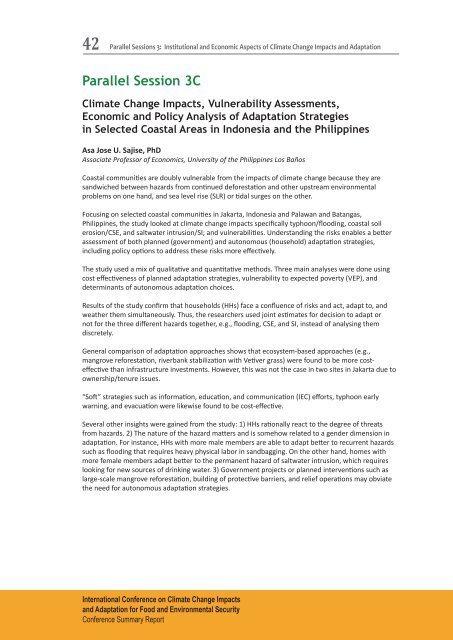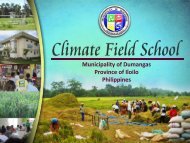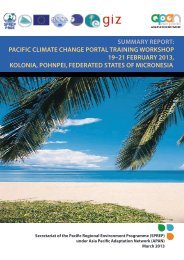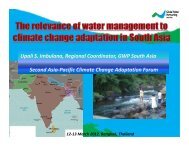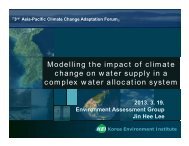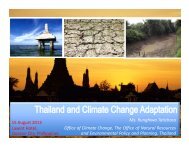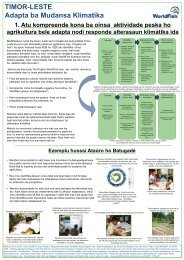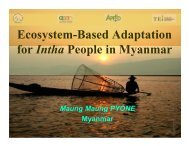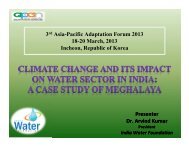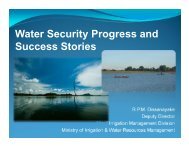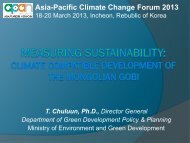PDF file (2.44 MB) - Asia Pacific Adaptation Network
PDF file (2.44 MB) - Asia Pacific Adaptation Network
PDF file (2.44 MB) - Asia Pacific Adaptation Network
Create successful ePaper yourself
Turn your PDF publications into a flip-book with our unique Google optimized e-Paper software.
42Parallel Sessions 3: Institutional and Economic Aspects of Climate Change Impacts and <strong>Adaptation</strong>Parallel Session 3CClimate Change Impacts, Vulnerability Assessments,Economic and Policy Analysis of <strong>Adaptation</strong> Strategiesin Selected Coastal Areas in Indonesia and the PhilippinesAsa Jose U. Sajise, PhDAssociate Professor of Economics, University of the Philippines Los BañosCoastal communities are doubly vulnerable from the impacts of climate change because they aresandwiched between hazards from continued deforestation and other upstream environmentalproblems on one hand, and sea level rise (SLR) or tidal surges on the other.Focusing on selected coastal communities in Jakarta, Indonesia and Palawan and Batangas,Philippines, the study looked at climate change impacts specifically typhoon/flooding, coastal soilerosion/CSE, and saltwater intrusion/SI; and vulnerabilities. Understanding the risks enables a betterassessment of both planned (government) and autonomous (household) adaptation strategies,including policy options to address these risks more effectively.The study used a mix of qualitative and quantitative methods. Three main analyses were done usingcost effectiveness of planned adaptation strategies, vulnerability to expected poverty (VEP), anddeterminants of autonomous adaptation choices.Results of the study confirm that households (HHs) face a confluence of risks and act, adapt to, andweather them simultaneously. Thus, the researchers used joint estimates for decision to adapt ornot for the three different hazards together, e.g., flooding, CSE, and SI, instead of analysing themdiscretely.General comparison of adaptation approaches shows that ecosystem-based approaches (e.g.,mangrove reforestation, riverbank stabilization with Vetiver grass) were found to be more costeffectivethan infrastructure investments. However, this was not the case in two sites in Jakarta due toownership/tenure issues.“Soft” strategies such as information, education, and communication (IEC) efforts, typhoon earlywarning, and evacuation were likewise found to be cost-effective.Several other insights were gained from the study: 1) HHs rationally react to the degree of threatsfrom hazards. 2) The nature of the hazard matters and is somehow related to a gender dimension inadaptation. For instance, HHs with more male members are able to adapt better to recurrent hazardssuch as flooding that requires heavy physical labor in sandbagging. On the other hand, homes withmore female members adapt better to the permanent hazard of saltwater intrusion, which requireslooking for new sources of drinking water. 3) Government projects or planned interventions such aslarge-scale mangrove reforestation, building of protective barriers, and relief operations may obviatethe need for autonomous adaptation strategies.International Conference on Climate Change Impactsand <strong>Adaptation</strong> for Food and Environmental SecurityConference Summary Report


